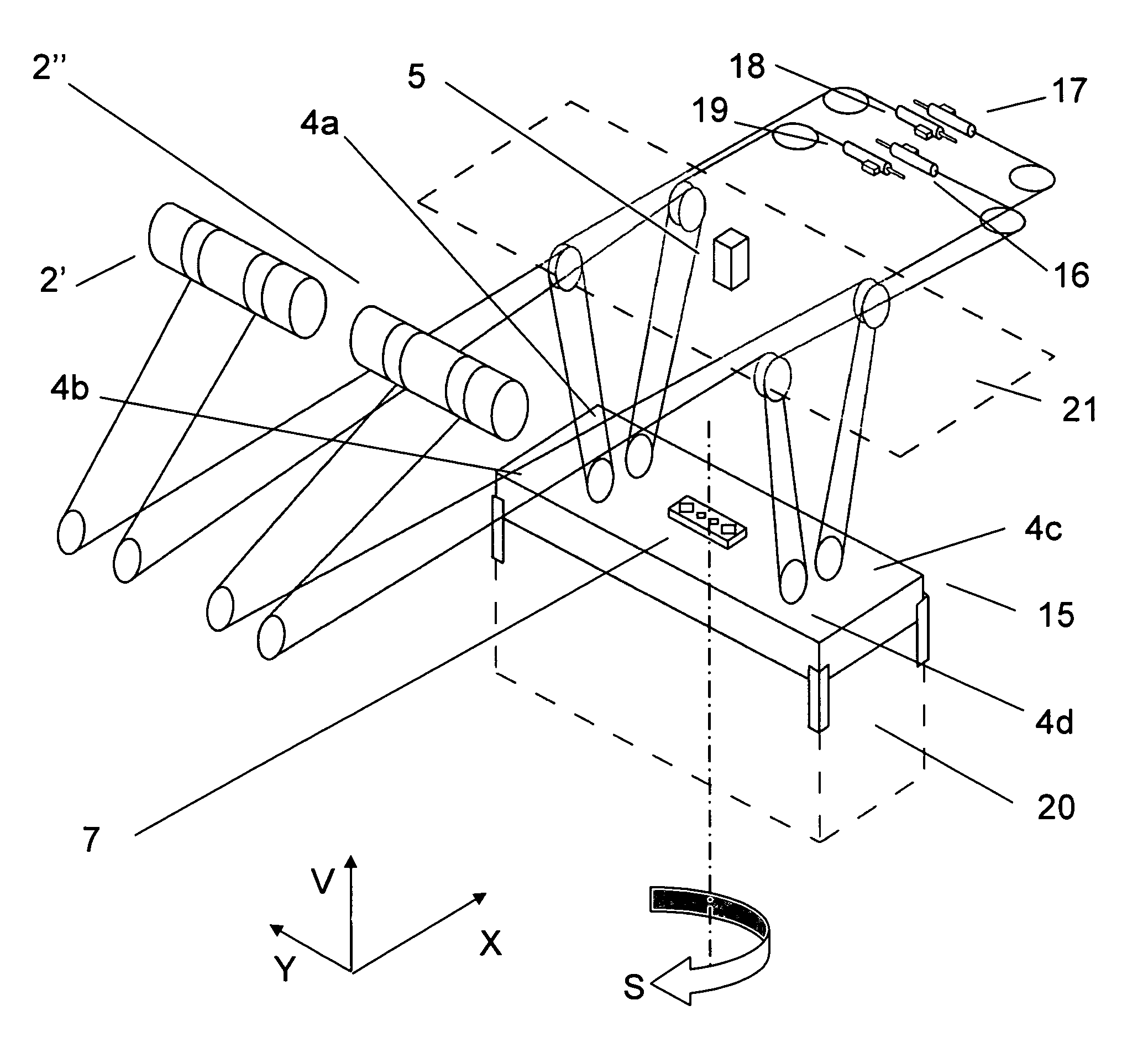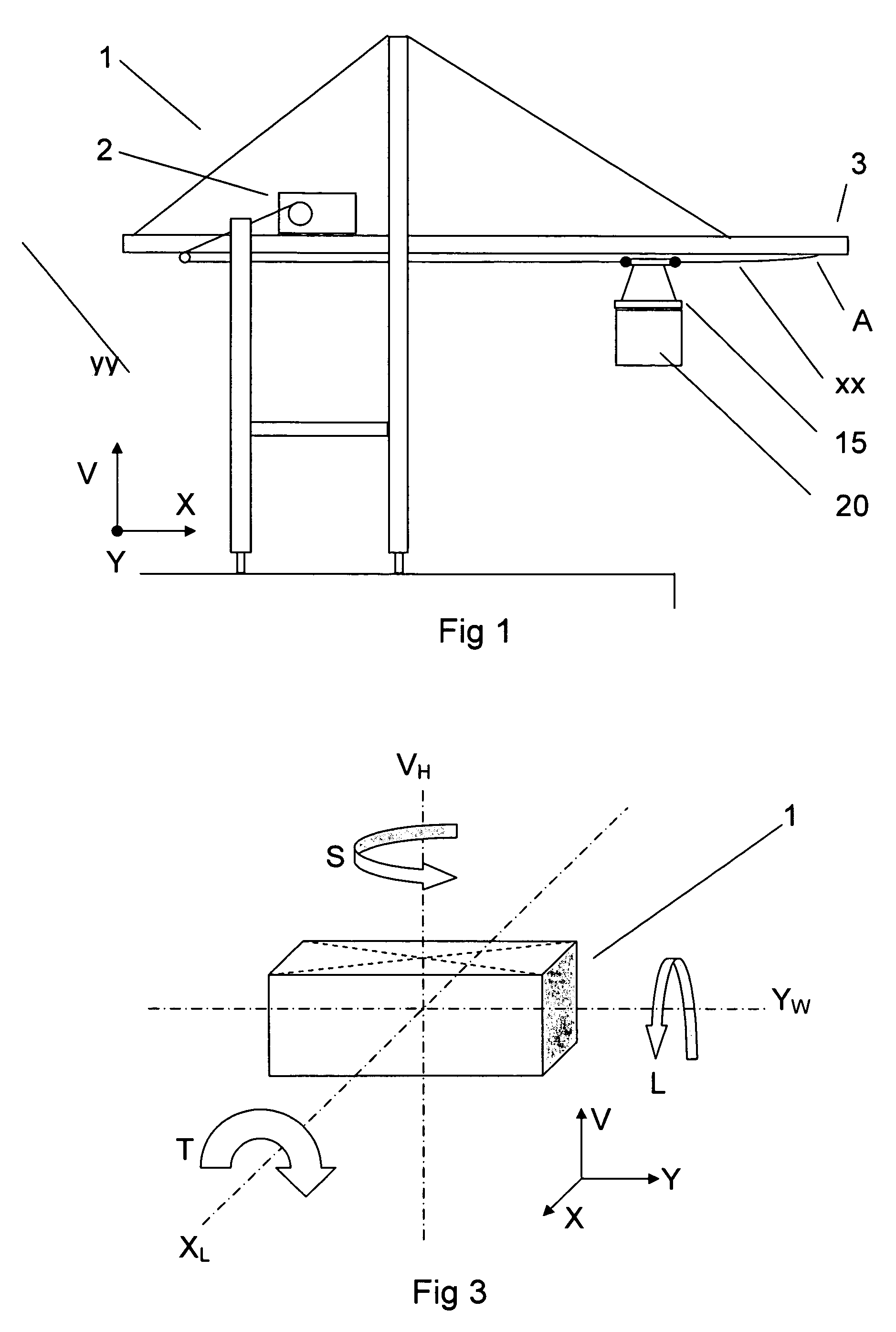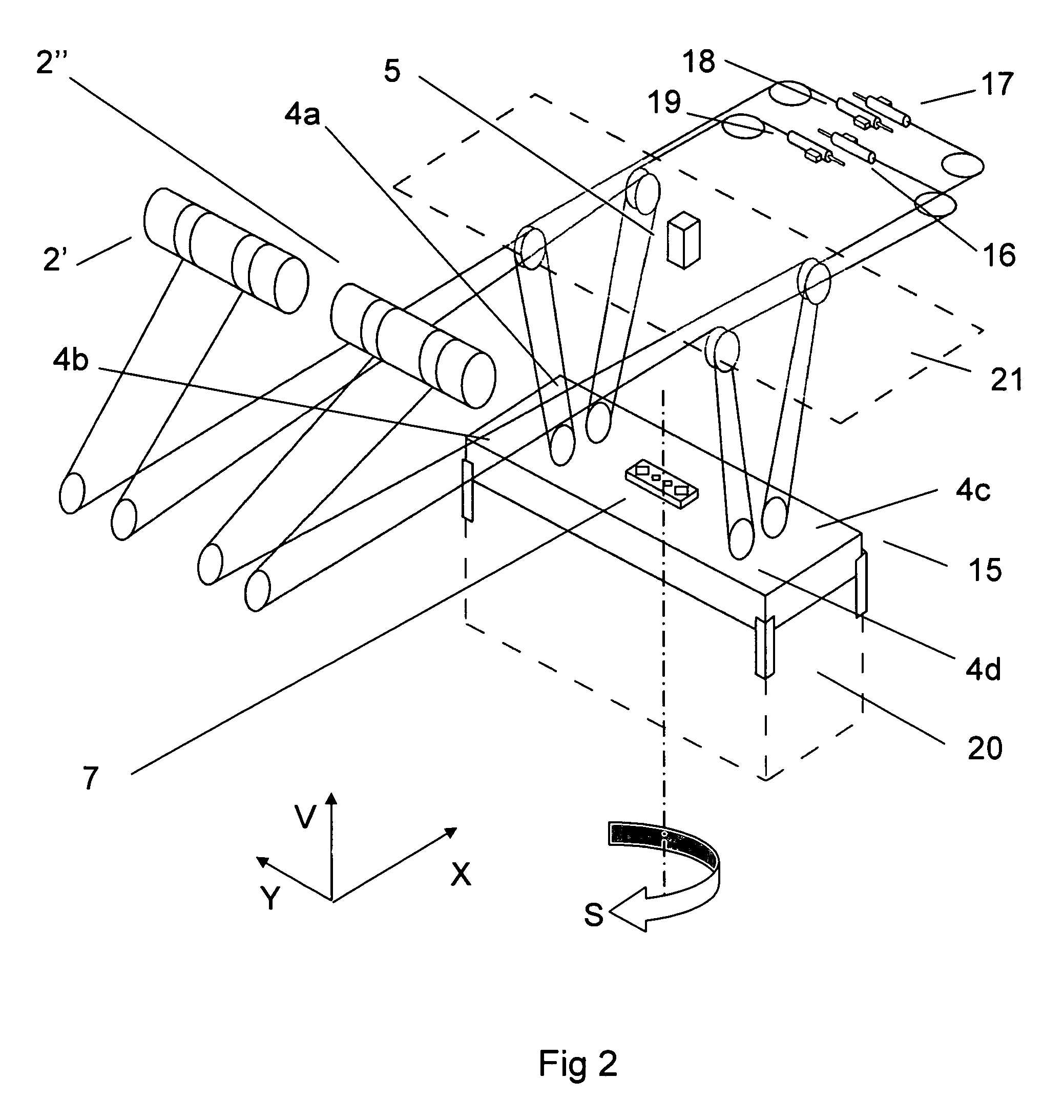Load control device for a crane
a control device and crane technology, applied in the direction of instruments, angle measurement, transportation and packaging, etc., can solve the problems of cumbersome errors, inability to accurately handle containers, and high time-consuming loading and unloading of containers to and from ships, so as to reduce the delay of swinging and oscillation of suspended loading during unloading, the effect of fast recovery
- Summary
- Abstract
- Description
- Claims
- Application Information
AI Technical Summary
Benefits of technology
Problems solved by technology
Method used
Image
Examples
Embodiment Construction
[0033]FIG. 1 shows a simplified schematic diagram of a ship-to-shore (STS) crane 1 arranged on a quayside for loading or unloading containers from a ship. The motor house mounted on the boom of the crane is arranged with main lifting motors and winding drums 2 which reel in or reel out ropes or load lines for lifting or lowering a container 20. The main lifting action takes place between the sheaves nearest the motor house and the boom tip 3 indicated as one end of the boom. Container 20 is held by a spreader 15 suspended from a trolley 21 which moves in the direction of arrow X forward (+ve) and back (−ve) along the boom. The load lines arranged on trolley 21 are also connected to actuators A (16-19) arranged at or near the tip 3 of the boom. The actuators, spreader, trolley and load lines are shown in more detail in FIG. 2.
[0034]FIG. 2 shows an arrangement according to an embodiment of the invention. The figure shows the container 20 held by a spreader 15 suspended from a trolley ...
PUM
 Login to View More
Login to View More Abstract
Description
Claims
Application Information
 Login to View More
Login to View More - R&D
- Intellectual Property
- Life Sciences
- Materials
- Tech Scout
- Unparalleled Data Quality
- Higher Quality Content
- 60% Fewer Hallucinations
Browse by: Latest US Patents, China's latest patents, Technical Efficacy Thesaurus, Application Domain, Technology Topic, Popular Technical Reports.
© 2025 PatSnap. All rights reserved.Legal|Privacy policy|Modern Slavery Act Transparency Statement|Sitemap|About US| Contact US: help@patsnap.com



